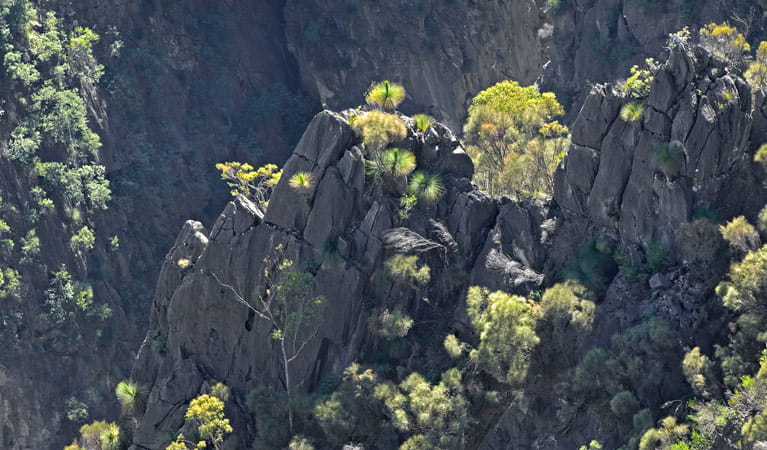Bungonia National Park
Overview
Bungonia National Park, in easy reach of Canberra, is an outdoor adventure playground offering caving, canyoning, rock climbing, abseiling, hiking and impressive views.
Read more about Bungonia National Park
Whether you’re looking to do an easy walk through woodland or wanting to push your body to the limits scaling a wall of limestone, Bungonia National Park is the place to visit. Known as the adventure capital of the Southern Tablelands, what at first appears to be a dry plateau quickly opens itself up to reveal a diverse and dynamic landscape filled with natural surprises.
Drop into our park office when you arrive to decide where you’d like to start exploring. It’s only a short walk on Molly O’Neil track to The Lookdown lookout, and the scenic view of Bungonia Slot Canyon from Adams lookout is equally awe-inspiring. What about packing a picnic lunch and doing a day’s hiking through the breathtaking canyon you’ve just seen from above? Or come prepared to tackle something really challenging, like abseiling, rock climbing, canyoning, or caving one of the 200 or so ‘wild’ caves. You need to be experienced and have your own equipment.
Local alerts
For the latest updates on fires, closures and other alerts in this area, see https://www.nationalparks.nsw.gov.au/visit-a-park/parks/bungonia-national-park/local-alerts
Contact
- in the Country NSW region
Bungonia National Park is always open but may have to close at times due to high fire danger, or park operations. It's a good idea to ring the office for current information.
-
Park entry fees:
$8 per vehicle per day. Daily fees can be paid at the ticket machines at the park office.
Buy annual pass. -
-
Bungonia office
02 4827 4700
Contact hours: Some weekends and peak holiday periods only. Call Fitzroy Falls Visitor Centre outside these periods. - 838 The Lookdown Road, Bungonia NSW 2580
-
Email: npws.illawarrahighlands@environment.nsw.gov.au
-
Bungonia office
-
-
Fitzroy Falls Visitor Centre
02 4887 8270
Contact hours: 9am to 4pm daily. Closed Christmas Day. - 1301 Nowra Road, Fitzroy Falls NSW 2577
-
Email: FitzroyFalls.VisitorCentre@environment.nsw.gov.au
-
Fitzroy Falls Visitor Centre
Visitor info
All the practical information you need to know about Bungonia National Park.
Map
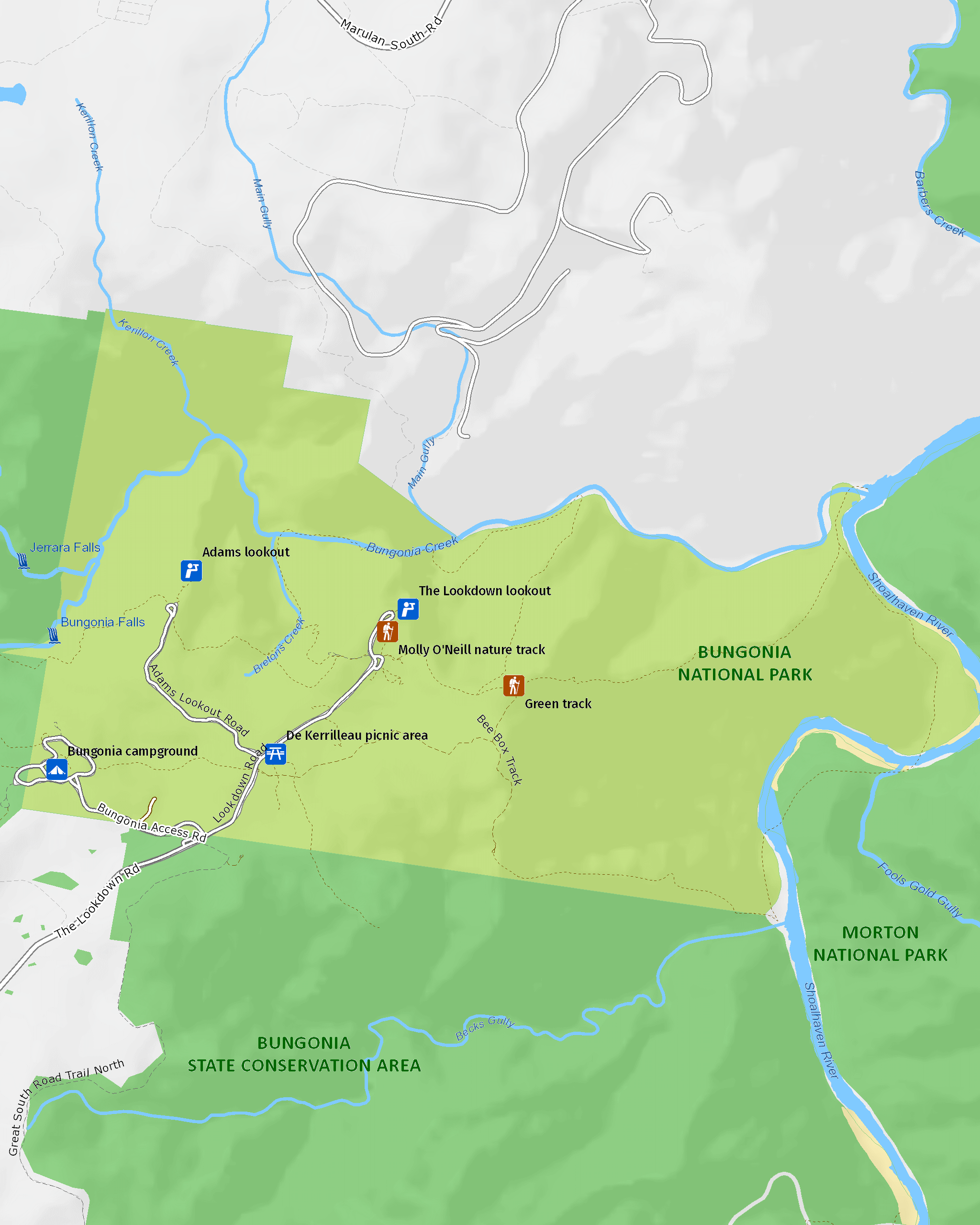
Map legend

Getting there and parking
Get driving directions
From Canberra:
- Take the Goulburn turnoff from the Hume Highway (at the Big Merino).
- Drive into town along Hume Street, which becomes Cowper Street.
- Turn right into Clinton Street and after a few minutes, you’ll see signs to Bungonia State Conservation Area, which will lead you to the park.
- Follow these signs for approximately 25 minutes
From Sydney:
- Turn left off Hume Highway at South Murulan and take the exit at the overpass
- Follow signs to Bungonia State Conservation Area for approximately 20 minutes
Parking
- Adams lookout See on map
- Bungonia campground See on map
- De Kerrilleau picnic area See on map
- The Lookdown lookout See on map
By bike
Check out the Bicycle information for NSW website for more information
By public transport
For information about public transport options, visit the NSW country transport info website.
Best times to visit
There are lots of great things waiting for you in Bungonia National Park. Here are some of the highlights.
Autumn
After the heat of summer has subsided, take advantage of the milder weather for hiking in the park.
Spring
Enjoy bushwalking in the comfortable temperatures of this time of year when the wildflowers are at their finest. Late in the season, the stands of brittle gum become extremely photogenic as their white trunks turn pink.
Winter
Deeper exploration of caves is possible when their carbon dioxide levels reduce in winter as the warm air from within rises and the caves ‘breathe'.
Weather, temperature and rainfall
Summer temperature
Average
12°C and 26°C
Highest recorded
40°C
Winter temperature
Average
1°C and 13°C
Lowest recorded
-9°C
Rainfall
Wettest month
March
Driest month
September
The area’s highest recorded rainfall in one day
200.7mm
Facilities
Amenities
Toilets
Picnic tables
Barbecue facilities
Drinking water
Showers
Maps and downloads
Fees and passes
Park entry fees:
$8 per vehicle per day. Daily fees can be paid at the ticket machines at the park office.
- All Parks Pass - For all parks in NSW (including Kosciuszko NP) $190 (1 year) / $335 (2 years)
- Multi Parks Pass - For all parks in NSW (except Kosciuszko) $65 (1 year) / $115 (2 years)
- Country Parks Pass - For all parks in Country NSW (except Kosciuszko) $45 (1 year) / $75 (2 years)
- Single Country Park Pass - For entry to a single park in country NSW (except Kosciuszko). $22 (1 year) / $40 (2 years)
Annual passes and entry fees (https://www.nationalparks.nsw.gov.au/passes-and-fees)
Prohibited
Camp fires and solid fuel burners
Wood fires are not permitted.
Pets
Pets and domestic animals (other than certified assistance animals) are not permitted. Find out which regional parks allow dog walking and see the pets in parks policy for more information.
Smoking
NSW national parks are no smoking areas.
Nearby towns
Goulburn (35 km)
Named after Henry Goulburn - the British Secretary of State for the Colonies, Goulburn developed into a major centre for wool, and in 1863, it became Australia's first inland city. Today, the town is a rich hub of history, discovery and natural beauty.
Bundanoon (62 km)
Bundanoon is the northern gateway to Morton National Park. Follow the well-marked bushwalking trails in one of NSW's largest national parks, admiring waterfalls that plunge into valleys below.
Bowral (77 km)
Spring is tulip time while summer has fragrant roses and autumn, flowering bulbs. Bowral Tulip Festival runs from the end of September until early October; the Autumn Garden Festival is held in May.
Learn more
Bungonia National Park is a special place. Here are just some of the reasons why:
Winged and furry
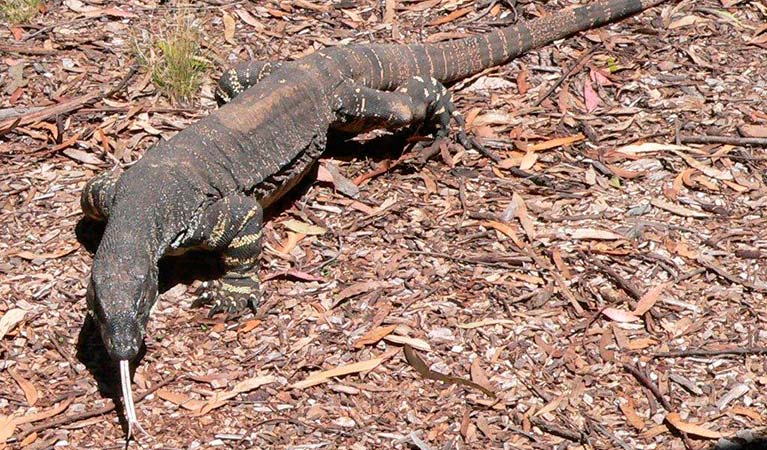
The vulnerable large bent-wing bat calls Bungonia home, and certain caves are closed during the year to help provide a safe environment for breeding and hibernation. When open, look out for a colony, cloud or cauldron of bats as you explore the limestone labyrinths of their natural habitat. A small population of koalas, classified as threatened, also inhabit the park.
- Adams lookout Adams lookout, great for birdwatching and picnicking, is the only platform in Bungonia that offers a view of the magnificent limestone feature of Bungonia Slot Canyon.
- Green track Enjoy Green track’s fairly easy hike, a walking track loop through woodlands, gullies, gorges and rainforest, taking in all the park’s major scenic lookouts and wildlife.
One of our oldest parks
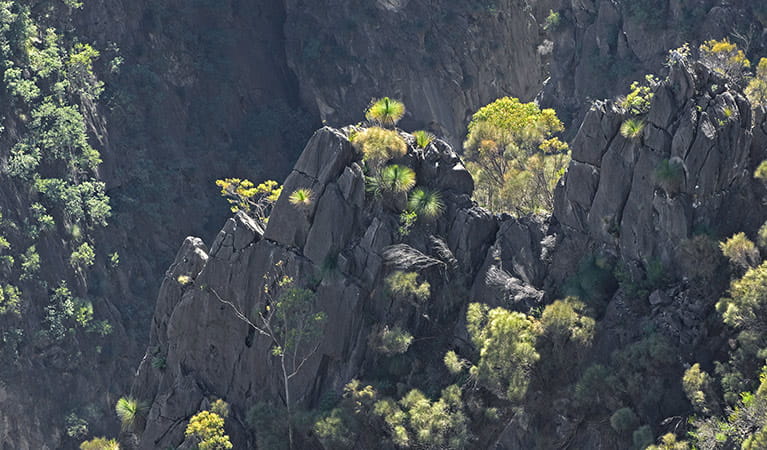
This park is one of the oldest in New South Wales. It was first protected as a water reserve in 1872, which was also the same year the world's first national park - Yellowstone, in USA - was established. Just as Yellowstone's geothermal features pull the crowds, Bungonia's geomorphology, both above and belowground, are its main draw. Louis Guymer was the park's first caretaker (1889-1909), who discovered caves and erected gates and ladders, some of which you may use during your visit.
- Bungonia Gorge guided adventure treks Go on a day hike or weekend trek to Bungonia Gorge with 100% Adventure. It’s a great way to experience Bungonia National Park, the adventure capital of the Southern Tablelands.
Once upon a time
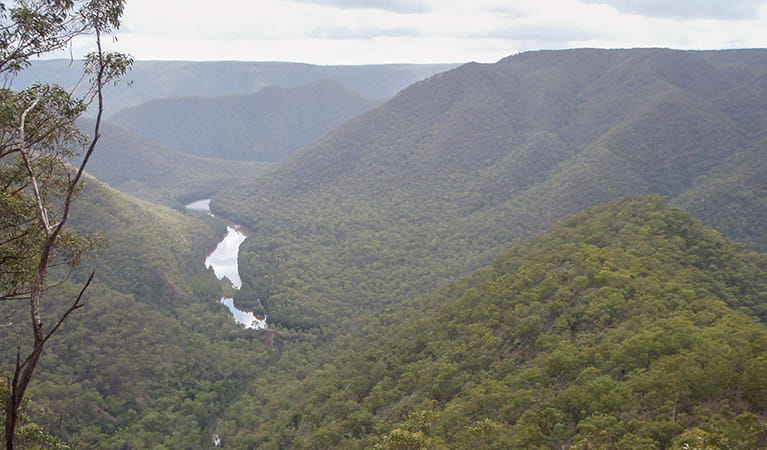
The park lies across the traditional lands of the Njunawal tribal group, the northwest corner of the Wandandian tribal territory and the southern boundary of the Gandangara tribal group. The ridge tops were almost certainly travel routes as people shifted in accordance with the seasonal availability of food. Evidence of campsites exists on the main plateau and limestone dolines contain edible plants consumed or used by Aboriginal people.
Endless caving opportunities
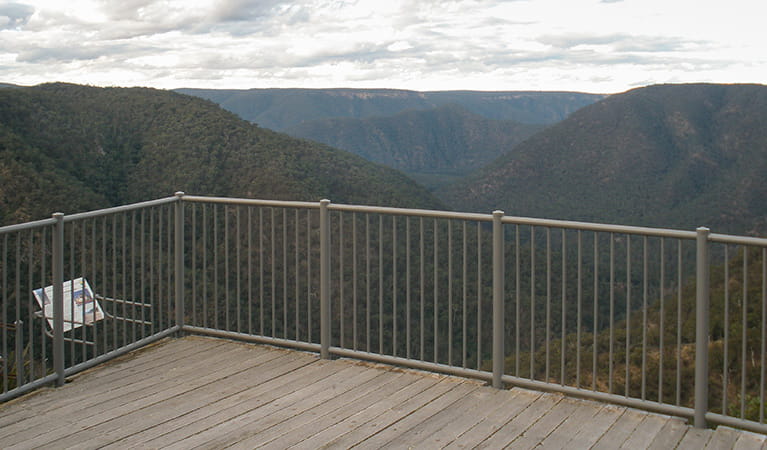
Known as the adventure capital of the Southern Tablelands, Bungonia is a place to really test your limits. There are around 200 wild caves in the park, many of which are open for experienced cavers to explore. For an exciting journey of waterfalls and plunge pools, Bungonia Creek and Jerrara Creek are the most popular canyoning spots. Bungonia Slot Canyon provides one of the few opportunities in Australia for climbing limestone and is as dramatic a place to scale a rock wall as its name suggests.
- De Kerrilleau picnic area Bungonia National Park, in easy reach of Canberra, is an outdoor adventure playground offering caving, canyoning, rock climbing, abseiling, hiking and impressive views.
- The Lookdown lookout It’s an easy walk from the carpark at the end of Lookdown Road to Bungonia lookdown, which offers superb scenic views into Bungonia Creek Gorge and beyond.
Education resources (1)
What we're doing
Bungonia National Park has management strategies in place to protect and conserve the values of this park. Visit the OEH website for detailed park and fire management documents.

